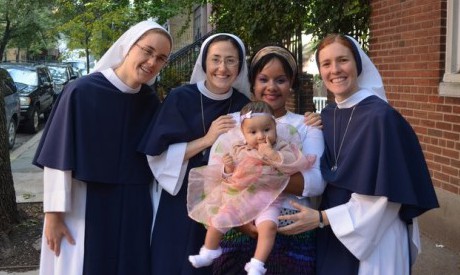Movies such as The Sound of Music, The Blues Brothers and Sister Act evidence the intrigue surrounding the life of a nun. Nuns in their 30s aren’t as common as they once were so the average person isn’t as likely to come into contact with one.
In fact, according to Pew Research Centre data the numbers of religious in America has declined dramatically since the 1960’s.
However, they are on the increase again in some places such as the United Kingdom, with the most attractive institutes interestingly being the more traditional orders, such as those who follow traditional prayer routines and still wear habits.
This week The Wall Street Journal published insights into the life of 30 year old Sister Bethany Madonna together with seven other Sisters of Life also in their 30s.
Based in New York, the Sisters of Life is a reasonably new order established in 1991 by New York Cardinal John O’Connor. Since then, it has thrived.
The impetus for the order came when Cardinal O’Connor visited Dachau, the site of a Nazi death camp. It moved him to start a religious community of women with a fourth vow to protect the sacredness of every human life, in addition to the traditional vows of poverty, chastity and obedience.
Canonically speaking, they are sisters and not nuns, working in the community as they do, rather than living a contemplative life, though they do spend at least four hours in prayer every day.
Earlier this year, the New York Post expressed concern at the city’s declining birth rate and the plight of New York families. A significant number of births are from the city’s poorest neighborhoods — nearly 6 in 10 moms were on Medicaid or government-financed health insurance for the needy:
The city’s birth rate is the lowest since 1936 — having steadily declined over the past decade, according to data obtained by The Post.
“This is a very troubling trend,” said Conservative Party state chairman Mike Long. “The economy is hurting families and the development of families … If we don’t produce enough young people, society won’t be able to pay for Social Security and Medicaid,” he warned. Continue reading
Sources
- MercatorNet article written by Shannon Roberts
- Image: Women Speak for Themselves
